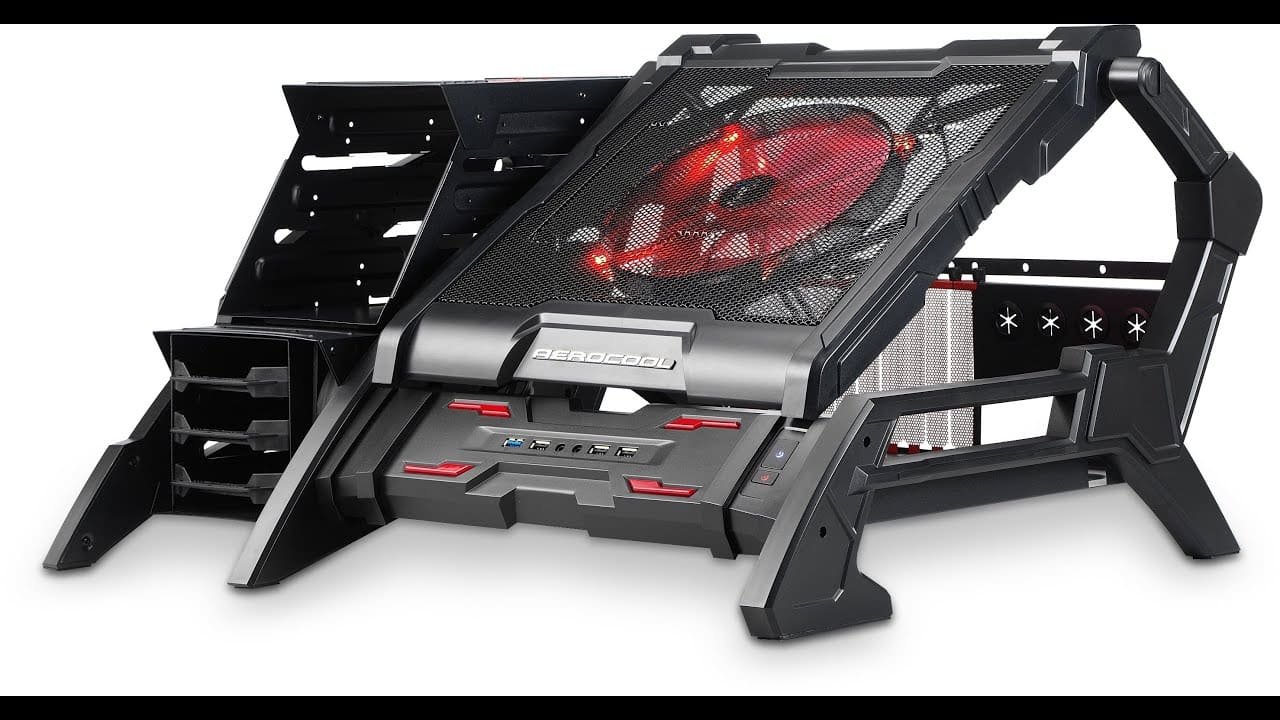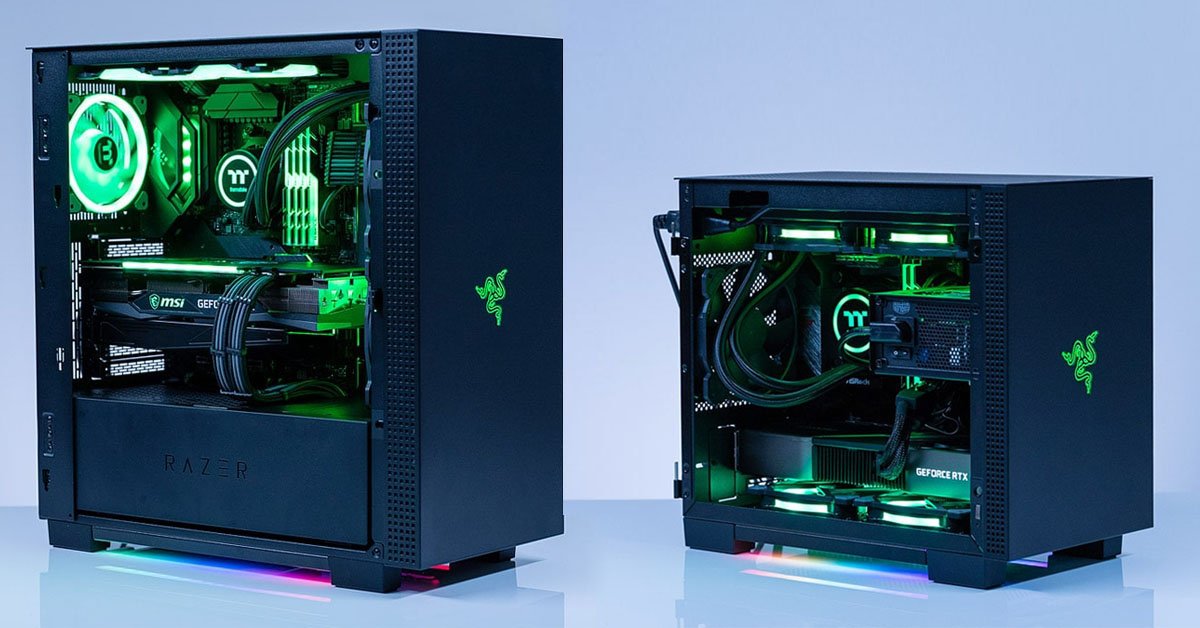Exploring Open-Air PC Case: Benefits, Types, Tips

Table of Contents
ToggleIntroduction of Open Air PC Case

In the evolving global of custom PC building, enthusiasts and professionals continuously seek ways to beautify their structures’ performance and aesthetics. The open air PC case stands proud of its distinctive design and capability among the myriad improvements that have taken place at the centre level. Unlike traditional enclosed cases, open-air cases offer an unobstructed view and direct exposure of the internal components, leading to unique cooling benefits and visual appeal.
What Are Open-Air PC Cases?
Open air PC cases are computer chassis designed without the conventional enclosing panels in standard cases. This design philosophy emphasizes minimalism and direct air exposure, resulting in a setup where the motherboard, GPU, cooling systems, and other components are visibly and physically more accessible. Open-air designs can range from simple frames to elaborate structures that showcase the PC’s internals as a form of technological art.
Benefits of Open-Air PC Cases
Enhanced Cooling and Thermal Performance
Open-air instances offer advanced thermal performance because of unrestricted airflow pc, minimizing heat buildup around additives. This layout blessings overclocking lovers and users with excessive performance hardware, permitting efficient heat dissipation. With no enclosures to impede airflow, components stay cooler, enhancing balance and doubtlessly extending the lifespan of touchy parts, ensuring surest performance even below heavy loads.
Aesthetic and Display Potential
Open-air cases provide a one-of-a-kind platform to show off the inner workings of a PC, ideal for enthusiasts who prioritize aesthetics. With features like custom water cooling setups, vibrant RGB lights, and top-class additives, the open design elevates the PC beyond mere functionality, turning it into a visually captivating painting of art. This appeal lies in the opportunity to display intricate details and unique configurations, enhancing the overall aesthetic experience for users and onlookers alike.
Ease of Access and Maintenance
Open-air cases boast effortless access to a PC’s internal components, thanks to their lack of panels or doors. This accessibility streamlines hardware upgrades, cable management, and cleaning tasks, rendering them notably easier than conventional cases. With no barriers hindering access, users can swiftly perform maintenance and modifications, enhancing the overall convenience and efficiency of managing their system.
Challenges and Considerations
Dust Accumulation and Environmental Hazards
One of the vast challenges of using an open air case is the extended exposure to dirt and debris. With the protective enclosure of a traditional case, components are at risk of accumulation, which may affect performance and longevity. Additionally, unintentional spills or objects falling into the case requires attention.
Noise Levels
Despite their cooling prowess, open-air cases may lead to increased noise levels. The absence of enclosing panels allows sound from fans and components to escape more freely, potentially creating a louder environment. While this drawback is notable, it can be mitigated by carefully selecting quieter components or sound-dampening materials and balancing performance with noise levels to suit individual preferences.
Types of Open-Air PC Cases
Open-air PC cases can be categorized into several types, each offering unique features and design philosophies:
- Frame-only designs focus on minimalism, providing a skeletal structure to mount components without cover.
- Modular designs offer a mix of open-air exposure with the opportunity to add or remove provinces of the case, allowing for a customizable balance between openness and protection.
- Bench tables are designed primarily for testing and benchmarking, offering easy access to components, but can also serve as a permanent open-air solution.
- Artistic and custom designs take open-air cases to the extreme, with custom-built structures highlighting aesthetic appeal and individuality.
Building with an Open-Air Case: Considerations

Choosing to build with an open-air case requires careful consideration of several factors:
- Component selection becomes more crucial, as the aesthetics of each part will contribute to the overall look of the build.
- The cooling strategy must be thoughtfully planned, balancing the benefits of natural air flow with the potential need for directed air or liquid cooling solutions to manage component temperatures.
- Environmental control is necessary to mitigate the risks associated with dust and debris. Regular cleaning and using air purifiers or dust filters can help maintain a clean system.
- Sound management may involve selecting quieter components or investing in sound-dampening materials for typically noisier components.
Popular Models and Examples
Several manufacturers offer open air cases with unique features and design philosophies. Popular models include:
- Thermaltake Core P Series: Known for its modular structure & versatility, allowing for wall mounting & horizontal or vertical direction.
- Lian Li PC-O Series: Offers a variety of aluminium craftsmanship with tempered mirrors, highlighting aesthetics & implementation.
- Cooler Master Maker Frame: Focuses on modularity & customization, catering to builders who like to tailor their point to their requirements.
Future Prospects and Innovations

The shift in the direction of open air PC instances is poised to persist, driven by evolving era and aesthetic tastes. Future iterations may include incorporated dust filtration systems to hold cleanliness, superior modular designs imparting outstanding customization options, and wise cooling solutions that dynamically adapt to temperature fluctuations. These improvements align with the demand for excessive-performance, visually attractive, and person-friendly PC setups, fostering a trajectory of persevered adoption and refinement in the open-air case market.
Moreover, as the line between technology and art becomes increasingly blurred, we can expect more collaborations between tech companies and artists, leading to even more unique and visually stunning open-air cases.
Conclusion
Open air PC cases represent a fascinating intersection of form and characteristics in custom PC construction. While they offer good-sized advantages regarding cooling performance, aesthetics, and ease of upkeep, they also require cautious attention to environmental elements and issue selection. As the technology evolves, so will the designs and functions of these cases, promising an exciting destiny for fans and experts looking to push the bounds of what a PC may be. Whether for gaming, paintings or as a showpiece, an open air PC case can elevate the open air PC case from an insignificant electronic device to a centrepiece of technological artistry.
FAQS
What is an open-air PC case?
An open-air PC case is a laptop chassis designed without the traditional enclosing panels determined in widespread instances. This layout exposes the internal additives, offering better airflow and showcasing the hardware.
What are the advantages of the use of an open-air PC case?
Open-air PC cases offer improved cooling performance due to unrestricted airflow, considering green warmness dissipation. They also provide a visually attractive platform to show the inner components, making hardware enhancements and renovation duties extra on hand.
What are the challenges associated with open-air PC instances?
The primary demanding situations include improved publicity to dust and debris, which may affect overall performance and require everyday cleaning. Additionally, open-air instances might result in higher noise levels because of the shortage of enclosing panels.
How do I choose the proper additives for an open-air PC build?
When building with an open-air case, consider selecting additives that offer excessive overall performance and contribute to the build's broad aesthetic appeal. Further, prioritize additives with efficient cooling answers to hold the surest temperatures.





